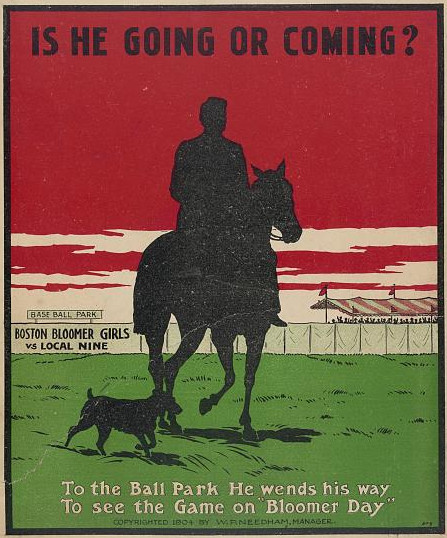
From a 1904 poster: Is the horseman riding away from you, or toward you?

From a 1904 poster: Is the horseman riding away from you, or toward you?
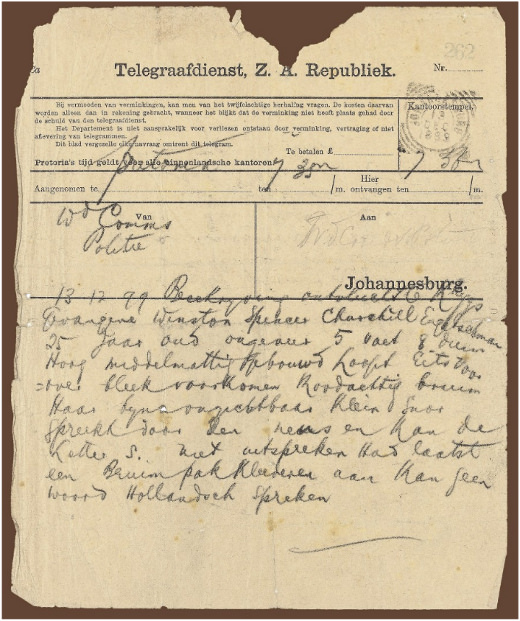
In 1899 Winston Churchill was covering the Boer War as a correspondent when he was captured and put in a Pretoria prison. He climbed a wall and set out to flee 300 miles to neutral Portuguese East Africa while the Afrikaners raised the alarm and circulated a rather unflattering description:
Escaped prisoner-of-war Winston Spencer Churchill Englishman 25 years old about 5 foot 8 inches tall medium build walks with a slight stoop. Pale features. Reddish-brown hair almost invisible small moustache. Speaks through his nose and cannot pronounce the letter S. Had last a brown suit on and cannot speak one word of Dutch.
Churchill fled on foot for two days, hid in a coal mine for three, and finally boarded a freight train, where he hid under bales of wool to evade a Boer search party. When he reached safety, publicity of his adventure set him on the path toward a career in government.
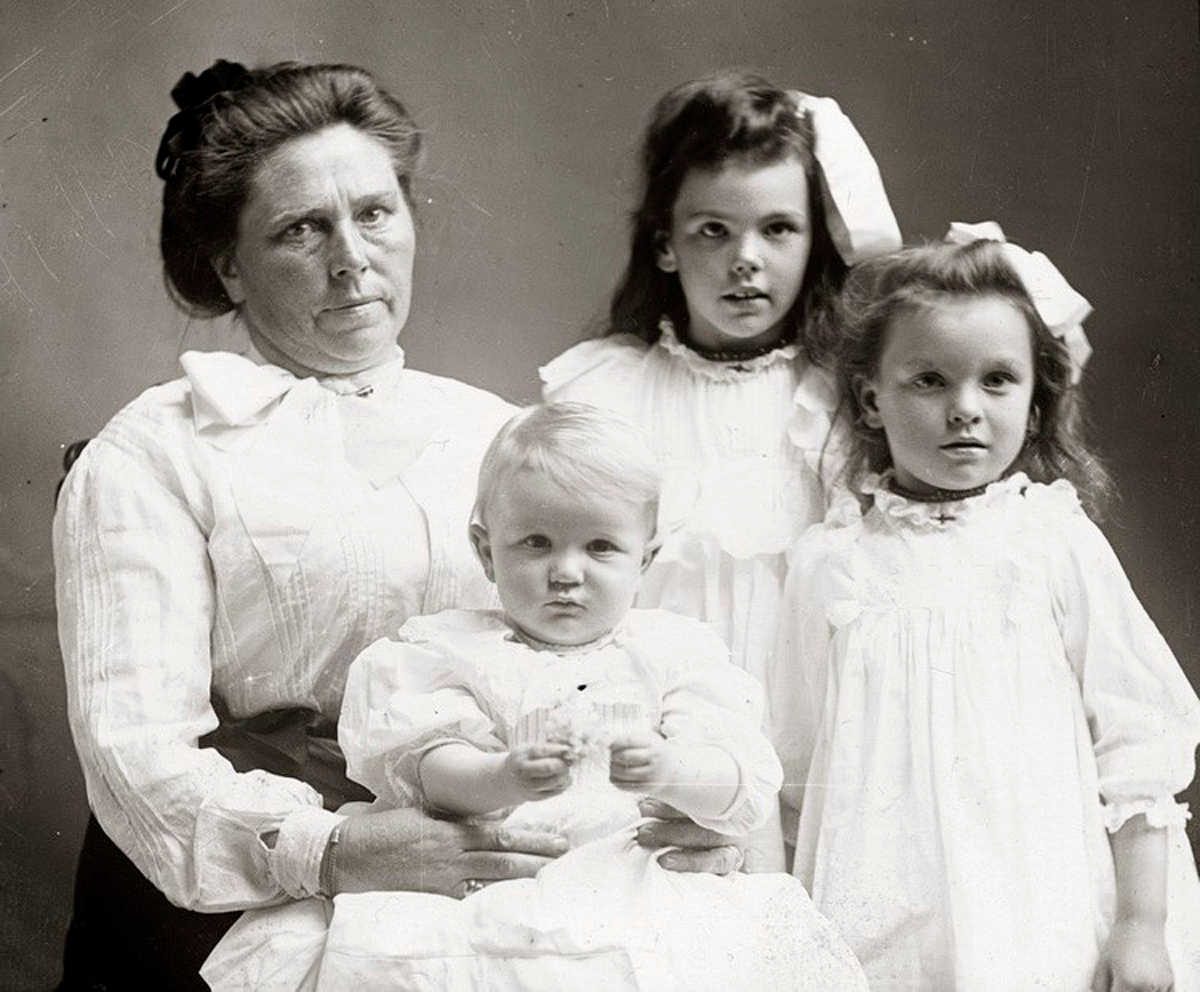
Belle Gunness was one of America’s most prolific female serial killers, luring lonely men to her Indiana farm with promises of marriage, only to rob and kill them. In this week’s episode of the Futility Closet podcast we’ll tell the story of The LaPorte Black Widow and learn about some of her unfortunate victims.
We’ll also break back into Buckingham Palace and puzzle over a bet with the devil.

This is an unretouched photo — in 2007 artist Julien Attiogbe took photos of the building at 39 Avenue George V in Paris, distorted them using a computer, then printed the photos on large canvases and applied them to the building’s facade.
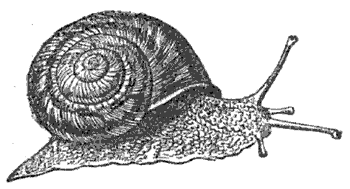
Canadian science writer Grant Allen’s 1889 essay “Seven-Year Sleepers” contains an eye-opening passage:
A certain famous historical desert snail was brought from Egypt to England as a conchological specimen in the year 1846. This particular mollusk (the only one of his race, probably, who ever attained to individual distinction), at the time of his arrival in London, was really alive and vigorous; but as the authorities of the British Museum, to whose tender care he was consigned, were ignorant of this important fact in his economy, he was gummed, mouth downward, on to a piece of cardboard, and duly labelled and dated with scientific accuracy, ‘Helix desertorum, March 25, 1846.’ Being a snail of a retiring and contented disposition, however, accustomed to long droughts and corresponding naps in his native sand-wastes, our mollusk thereupon simply curled himself up into the topmost recesses of his own whorls, and went placidly to sleep in perfect contentment for an unlimited period. Every conchologist takes it for granted, of course, that the shells which he receives from foreign parts have had their inhabitants properly boiled and extracted before being exported; for it is only the mere outer shell or skeleton of the animal that we preserve in our cabinets, leaving the actual flesh and muscles of the creature himself to wither unobserved upon its native shores. At the British Museum the desert snail might have snoozed away his inglorious existence unsuspected, but for a happy accident which attracted public attention to his remarkable case in a most extraordinary manner. On March 7, 1850, nearly four years later, it was casually observed that the card on which he reposed was slightly discoloured; and this discovery led to the suspicion that perhaps a living animal might be temporarily immured within that papery tomb. The Museum authorities accordingly ordered our friend a warm bath (who shall say hereafter that science is unfeeling!), upon which the grateful snail, waking up at the touch of the familiar moisture, put his head cautiously out of his shell, walked up to the top of the basin, and began to take a cursory survey of British institutions with his four eye-bearing tentacles. So strange a recovery from a long torpid condition, only equalled by that of the Seven Sleepers of Ephesus, deserved an exceptional amount of scientific recognition. The desert snail at once awoke and found himself famous. Nay, he actually sat for his portrait to an eminent zoological artist, Mr. [A.N.] Waterhouse; and a woodcut from the sketch thus procured, with a history of his life and adventures, may be found even unto this day in Dr. [S.P.] Woodward’s ‘Manual of the Mollusca,’ to witness if I lie.
This appears to be true: Samuel Peckworth Woodward’s 1851 Manual of the Mollusca contains the portrait above, marked “From a living specimen in the British Museum, March, 1850,” and James Hamilton’s 1854 Excelsior describes the snail’s return to life: “The specimen was immediately detached, and immersed in tepid water. After the lapse of a period not exceeding ten minutes, the animal began to move, put forth its horns, and cautiously emerged from its shell. In a few minutes more it was walking along the surface of the basin in which it was placed. The last time it had exercised its locomotive faculty was in the sandy plains of Egypt, not far from the banks of the Nile.”
Hamilton says it spent the rest of its existence in a glass enclosure, feasting on cabbage and taking an eight-month nap in 1851. It died finally in March 1852. “Such was the end of the Egyptian snail, and it was with some feeling of regret that its death was recorded.”
(Via Metafilter.)
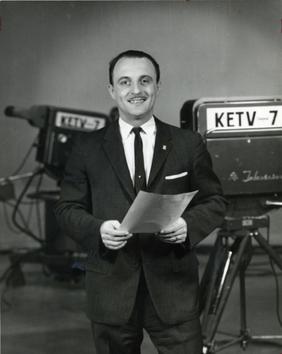
In February 1965, Omaha TV announcer John “Fritz” Johnson was attending an archery tournament in Chicago when a young woman approached him and asked, “Pardon me, but aren’t you my uncle, Larry Bader, who disappeared seven years ago?”
Amazingly, he was. Lawrence Joseph Bader had been a cookware salesman in Akron until March 15, 1957, when he’d gone fishing on Lake Erie and disappeared. Four days later he resurfaced in Omaha as flamboyant bachelor Fritz Johnson, who became a bartender, a radio announcer, and eventually a TV sports director.
Bader had been $20,000 in debt when he disappeared, but Johnson insisted that he had no memory of his former life, and a team of psychiatrists backed him up. “It was like a physical shock,” he said. “Up until that moment, I had no doubt that I was not Larry Bader. But when I heard that, it was like a door had been slammed and somebody had hit me right in the face.”
After his disappearance, Bader had been declared dead, and his wife had collected $39,500 in life insurance. Now she would have to pay that back, and both her new engagement and Johnson’s second marriage would have to be canceled. “I just wish it wasn’t true,” she told Life in March 1965. “We had become adjusted, we had adapted to and accepted his ‘death.’ It was just … well … wrong that this had to happen.”
He died the following year, so it’s still unclear whether his experience was amnesia or a hoax. “I’m very sorry,” he said, “but my doctors have warned me not to try to figure it out by myself. They say it might hurt me.”
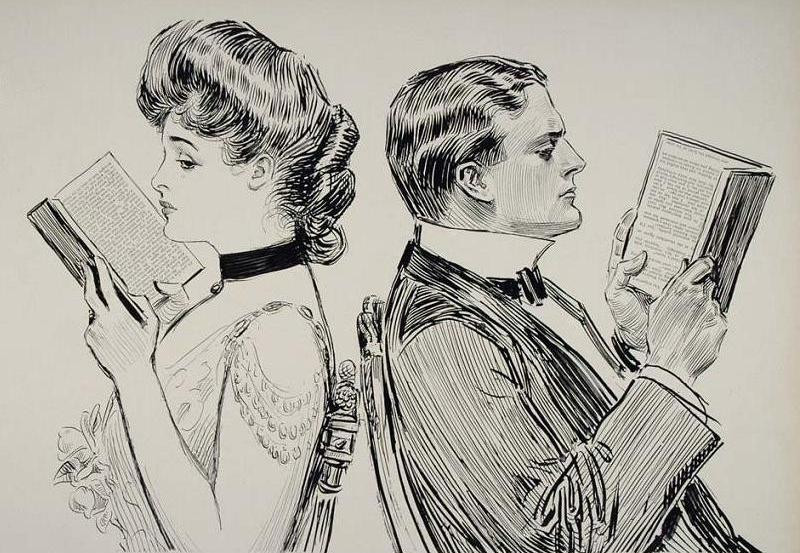
Coleridge is said to have described the happiest possible marriage as “the union of a deaf man to a blind woman.”
The eccentric Lord Berners’ requisites for a happy marriage: “A short memory, a long purse, infinite credulity, no sense of humor, a combative nature, the man should be a man and the woman a woman or vice versa.”
“In the old days I demanded or perhaps pleaded for three things in a wife. She should have enough money to buy her own clothes, she should be able to make incomparable Béarnaise sauce, and she should be double-jointed. In the event I got none of these things.” — Ian Fleming, quoted in Ben MacIntyre’s For Your Eyes Only
Boswell: “Pray, Sir, do you not suppose that there are fifty women in the world, with any one of whom a man may be as happy, as with any one woman in particular?”
Johnson: “Ay, Sir, fifty thousand.”
Boswell: “Then, Sir, you are not of opinion with some who imagine that certain men and certain women are made for each other; and that they cannot be happy if they miss their counterparts.”
Johnson: “To be sure not, Sir. I believe marriages would in general be as happy, and often more so, if they were all made by the Lord Chancellor, upon a due consideration of the characters and circumstances, without the parties having any choice in the matter.”
In the Fibonacci sequence, each number is the sum of the two preceding ones:
0, 1, 1, 2, 3, 5, 8, 13, 21, 34, 55, 89, 144, 233, 377, 610, 987, 1597, 2584, 4181, 6765, 10946, 17711, 28657, 46368, …
This produces two notable secondary patterns: Summing the squares of each pair of adjacent entries yields an even-numbered term in the sequence:
12 + 12 = 2
12 + 22 = 5
22 + 32 = 13
32 + 52 = 34
52 + 82 = 89
82 + 132 = 233
132 + 212 = 610
And the odd-numbered terms between these are the differences of squares of terms taken two by two, two places apart:
22 – 12 = 3
32 – 12 = 8
52 – 22 = 21
82 – 32 = 55
132 – 52 = 144
212 – 82 = 377
342 – 132 = 987
… and so on.

The Oxford Companion to the Garden notes a curiosity at Packwood House, a Tudor manor house near Lapworth, Warwickshire:
At some time, possibly in the early 18th century, a mount was made beyond the garden walls to the south on the axis of a gateway in the garden walls and the garden door of the house. Long known as the Sermon on the Mount it is crowned with a single yew with, clustering about it on the slopes, further yews representing the twelve apostles and the four evangelists.
The yews are more than 350 years old, but it’s not clear who devised this setting. A drawing of the garden from the 1700s has survived, but there’s no trace of the mount. The earliest known written description of it appears in Reginald Blomfield and F. Inigo Thomas’ The Formal Garden in England (1892). “Blomfield was told that it represented the Sermon on the Mount by the gardener who was clipping the yews when he visited.”

In his 1976 book 100 Numerical Games, French puzzle maven Pierre Berloquin asks whether it’s possible to construct a magic square using the first nine prime numbers (here counting 1 as prime):
1 2 3 5 7 11 13 17 19
Is it?